Meet Saipan, one of America’s forgotten territories
Alexandra Fries ·On February 1st 2017, Heath Kelsey, Caroline Donovan, and I traveled from Guam to our last stop on the Pacific Islands trip, Saipan. Saipan is an island in the Mariana Archipelago, and is part of the Commonwealth of the Northern Mariana Islands (CNMI), a US territory. Saipan, Rota, and Tinian are the only islands currently inhabited in the Marianas.
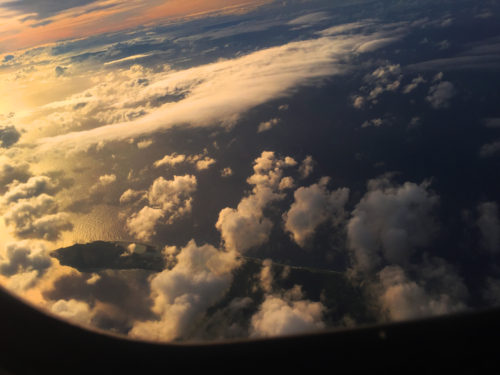
We traveled to Saipan for our last workshop, which was held to develop the Mariana Islands Report Card. Twenty people participated in the workshop, which was held at the Pacific Islands Club. The workshop covered conceptualizing the system, determining values and threats, looking at different regions, specifying thresholds and scoring of indicators, and drafting the layout of the report card. We also talked a lot about the history and culture of Saipan and CNMI and the effects those things have had on coral reefs.
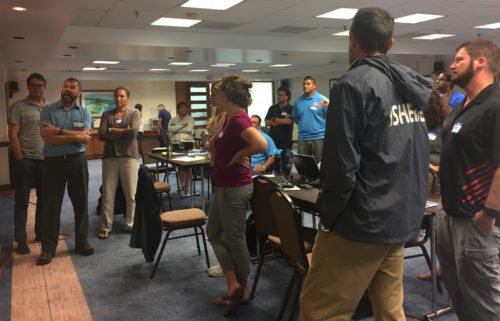
CNMI has a long history from the time it was settled, stretching as far back as 4000 BCE. The pacific islanders that settled the Marianas were known as the Chamorros after their first contact with Spaniards in 1521 when Ferdinand Magellan landed on Guam. Other pacific islanders called Carolinians migrated to the island from the Caroline Islands, part of Micronesia and Palau. The Spanish formally occupied the island starting in 1600 until the Spanish-American war. After occupation by the United States during the war, it was sold to Germany in 1899. During WWI the Japanese captured the island, and held it until WWII when the United States took control of the island. Occupation by so many different groups, and being the site of three major wars has taken a toll on Saipan.

After the workshop, the IAN team gave out awards to our NOAA colleagues who were with us in all four workshops. We celebrated a job well done, and more work to do in the coming year to complete these report cards.
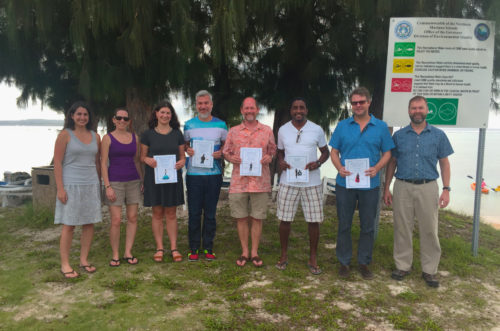
The next day, Heath, Caroline, and I explored the island, going to many historical sites as well as two beaches for snorkeling. We saw several WWII memorials and cemeteries, Suicide Cliff, and Banzai Cliff, where thousands of people lost their lives instead of surrendering.

We stopped by the Grotto, a collapsed limestone cavern where you can sometimes dive and snorkel depending on the weather conditions. Conditions were not ideal, so we traveled to the east and south of the island and snorkeled at Lau Lau Beach and Obyan Beach.
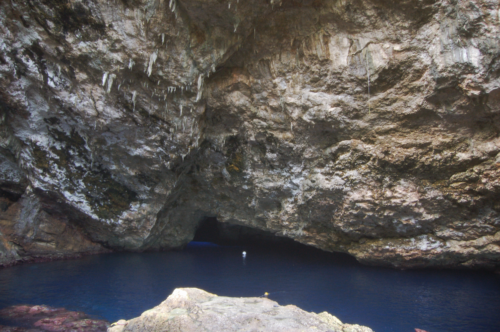
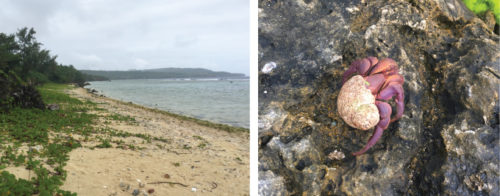
About the author
Alexandra Fries

Alexandra is a Program Manager at the Integration and Application Network (IAN) based at the University of Maryland Center for Environmental Science in Annapolis MD. Alexandra’s work in environmental management has been focused on assessment, monitoring, and management of aquatic, marine, and terrestrial ecosystems. Alexandra has extensive experience in data analysis, synthesis, mapping, interpretation, and communication. Alexandra has experience working with a diverse group of partners including those in local, state, and federal government, non-governmental organizations, non-profit organizations, private industry, and academia. Within IAN, Alexandra conducts data analysis, synthesis, and communication by completing environmental report cards, updating the IAN website, and conducting science communication courses. Alexandra also creates science communication materials such as diagrams, posters, presentations, newsletters, and reports using Adobe Creative Suite, Microsoft Office Suite, and ArcGIS. Alexandra has experience managing projects and staff on local and international projects, liaising directly with partners and colleagues, and providing insights on project direction and goals.